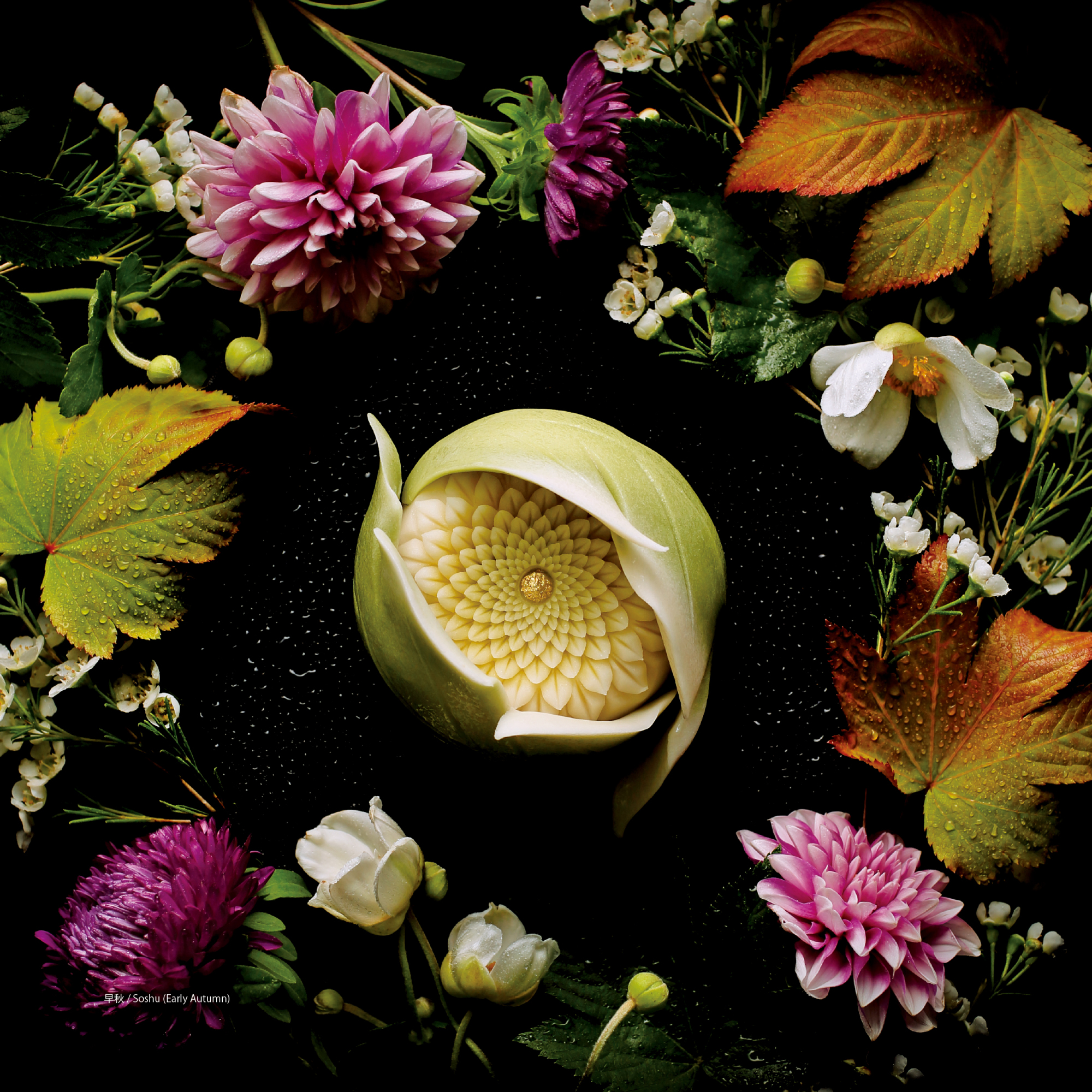A rapt audience watches in silence as a delicate confection in the shape of a flower blooms in the experienced hands of a wagashi master. Junichi Mitsubori, a third-generation wagashi (Japanese dessert) artisan hailing from Yokosuka City, Kanagawa, does not embellish his movements as he crafts the sugary gyūhi (glutinous rice flour mochi) with his fingers and a haribashi (stylus).
The audience is gathered for the presentation of "Kado: New Art of Wagashi," Mitsubori's new bilingual book on the wagashi form. The 43-year-old Mitsubori is one of Japan's most recognized wagashi artisans and a champion of kadō, which he defines as a new "way of wagashi," a term that echoes the meticulous care and preparation involved in sadō ("way of tea"). In 2016, Mitsubori founded his own school of kadō, the Kado Ichika-ryu, which "uses bespoke utensils and calculated gestures" to produce a highly stylized wagashi experience. With his style of wagashi presentation, Mitsubori aspires to create art that will "soothe the soul" and communicate Japan's unique bikan (sense of beauty).
The creation of wagashi goes beyond simply crafting a beautiful dessert, says Mitsubori. It is a performance in which the finale is "moist, perishable living art destined to lose its sculptural beauty. ... This fleeting nature of wagashi, like human life, again captures the heart." To Mitsubori, the beauty of the performance is as crucial to kadō as the artistry of the dessert itself.

















With your current subscription plan you can comment on stories. However, before writing your first comment, please create a display name in the Profile section of your subscriber account page.